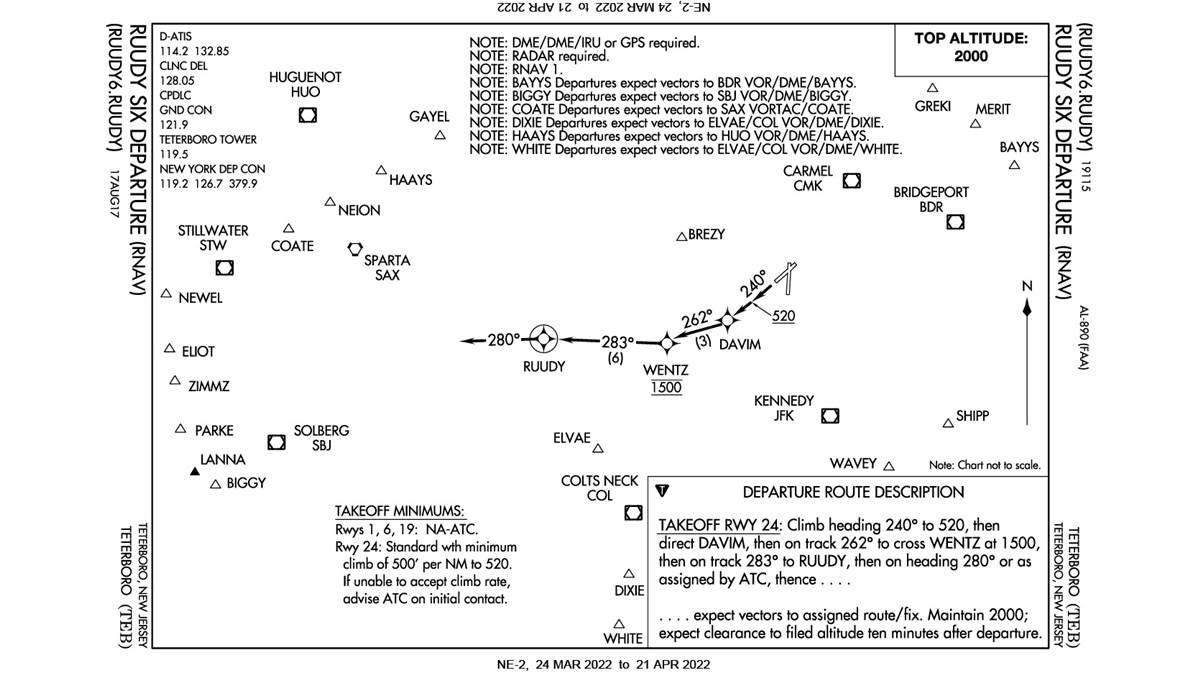Learning to leave
Instrument departure procedures

Underlying any discussion of Part 91 instrument departures is the fact that the regulations are virtually silent on the subject. Despite multiple paragraphs covering what a pilot can and can’t do on an approach, there is one brief paragraph on instrument departures for Part 91 pilots. It says only that we must use an obstacle departure procedure when one has been established.
Notably absent is any discussion of takeoff weather minimums. Part 91 pilots can take off in any conditions they desire. However, one practice session of trying to take off while wearing a hood will quickly convince you that this is an ill-advised idea. It might make sense if one-half of a runway is obscured by fog and the takeoff is in good conditions, while the reporting station remains socked in. Or when departing during the last few minutes of morning fog.
A good rule of thumb is to use the airport’s approach minimums as your personal takeoff minimums. That will ensure that if there’s a problem you can come back around for an approach. While building confidence and experience you may even want to consider something higher, such as traffic pattern altitude, as your personal minimum. Or 500 feet for your home airport and traffic pattern altitude for other airports.
Once you’ve determined the weather meets your standards, it’s time to figure out how to depart. There are generally four ways to depart on an instrument flight plan.

- Departure procedure. Sometimes called a standard instrument departure, a departure procedure is a series of charted routes that bring an aircraft from the runway environment to the en route phase of the flight. Departure procedures are issued for busier airports and have the dual purpose of making air traffic operations more efficient and providing obstacle clearance. Air traffic control assigns a departure procedure, and you can’t fly one without the clearance. Although they are used routinely for turbine aircraft, departure procedures should be expected at busy airports even for piston aircraft. They can be quite complex, so plan ahead before calling for your initial clearance.
- Obstacle departure procedure. At airports where a charted departure procedure hasn’t been established, it’s wise to check if an obstacle departure procedure (ODP) has. Anytime there’s an obstacle above a certain height within 25 (non-mountainous) or 46 (mountainous area) nautical miles from an airport, there will be an obstacle departure procedure. Which is to say, thousands of airports have an ODP. Like the regulation states, you are expected to adhere to an ODP if one exists. The ODP is found in the front of the applicable approach plate book, and usually are nothing more than a simple climb and turn.
Unless otherwise noted, the FAA assumes a 200-foot-per-nautical-mile climb, which is easy for many light aircraft, but not all. Some procedures require a rate of 400 or more. It’s also worth noting that the Aeronautical Information Manual suggests pilots file the ODP as part of the flight plan. - Visual climb over airport. If the conditions are VFR and you can’t or don’t want to meet the climb gradient requirements of an ODP, you can elect a visual climb over airport. This procedure enables a pilot to circle above the field before departing the area and entering the en route section of the flight. You must tell ATC in advance that you’ll be departing with a visual climb.
- Vectors. If the airport doesn’t have an obstacle departure procedure or a charted departure procedure, expect a vector from air traffic control. This can come in the initial clearance or from the tower controller. If an ODP has been established, ATC can issue a vector that makes terrain separation their responsibility.
Because of the complexity of maintaining your own terrain clearance, it’s often easier to depart from a busy tower-controlled airport than one in a rural location with no guidance. Regardless of where you depart from, consider that air traffic control, terrain, and weather all coalesce to make taking off nearly as complex as landing.



